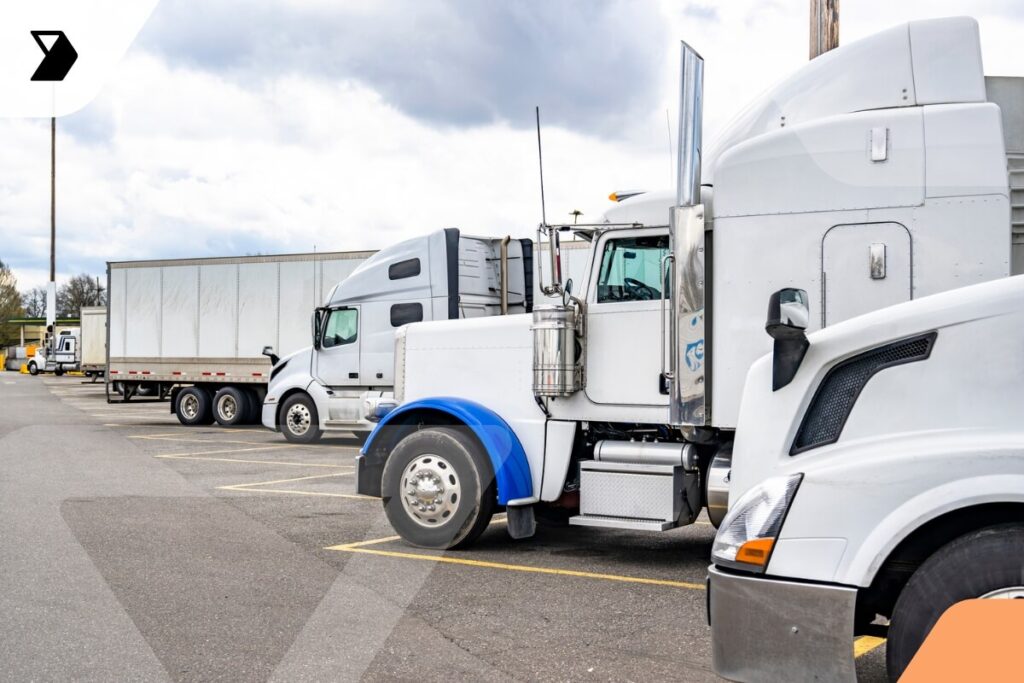The Pros and Cons of an Agile Supply Chain Model
Today we're looking at the way supply chains around the globe have changed. During the pandemic, the traditional lean supply chains fractured.
Ready to transform your supply chain?

This leaves many of us to ask the same questions: Is agile the supply chain model that can save us? And if so, how soon?
“Business strategies for dealing with uncertainty and change will be critical for managing successfully in the global market during the Transformation Age.” — Transformation Age: Shaping Your Future, MHI Roadmap Series
After all, many of these supply chains were installed over the prior 40 years, driven by globalization. All it took to find the lean method’s flaw was one black swan event. Yes, there have been aftershocks, as you know, which have stirred up a lot of discussion about the agile supply chain method.
If you’re here, it’s because, like many of us, you’re looking for what the correct next move is from here. Dr. Suzanne Fry was looking at the paradoxical global issues when she helped craft the report Global Trends: Paradox of Progress. In it, Fry frames the challenges, which seemingly usher in a sea change to the agile supply chain. While I don’t dispute any of her findings, I do think an exploration of agile’s pros and cons is warranted.
So let’s determine whether agile is truly the answer to lean’s fracture—or better suited for slide decks and whiteboards.
Has the Tide Turned to Agile?
“In a world where surprises hit harder and more frequently, the most successful actors will be those that are resilient … [Resilience will enable] them to better adapt to changing conditions, persevere in the face of adversity, and act quickly to recover after mistakes.” —Dr. Suzanne Fry, DNI report, Paradox of Progress, 2017
It’s useful to remember how we got here. For me, the unofficial start of the supply chain crisis was March 11, 2020. That day, we found out the NBA had suspended their season after Rudy Gobert tested positive for COVID-19. Soon after, the NCAA basketball tournament was canceled. Then Major League Baseball suspended their season. The rest of society seemingly followed suit.
We all remember how markets tanked. And the run on toilet paper. How we all downloaded Zoom. And how we also all downloaded Amazon Prime.
Indeed, the world shut down, and uncertainty was palpable. Airports, restaurants, and businesses across the globe closed their doors. People didn’t leave their homes. Meanwhile, we took to our phones. And after a short recession, the global economy seemingly snapped back to life on the back of lockdown-infused e-commerce.
Did E-Commerce Kill Lean?
Many people saved a lot of money by staying home. Many of us found ourselves flush with a little extra cash. Therefore, we did what humans do best. That’s right. We adapted to our environment. Our opposable thumbs came through once again. We learned a new way to shop.
We immediately began ordering groceries online. Any lingering concerns about online purchases simply flew out the open window one spring day in 2020. Soon after, we even stopped spraying the cardboard boxes with Lysol. And now our new online habits are seemingly entrenched for good.
Lean’s Core Tenets Stopped Paying
So what happened? Well, the core tenets of a lean business can be summarized the following way:
- Have a customer-first mentality.
- Eliminate waste (including costs, movements, materials, processes, even talents).
- Focus on continuous improvement.
A big part of lean methodology is the engagement of the frontline worker in this continuous improvement aspect. On any given day at any distribution center, the frontline workers actually make the e-commerce supply chain work. We’re talking about the folks who complete the process. They receive the goods. Stow. Pick. Pack. Load the truck. Drive the truck.
Front-office folks were told to work at home. But many of these frontline folks like truck drivers never stopped work as usual. They were and are essential workers.

In certain places, COVID-19 restrictions and other factors ground normal business practices (let alone lean best practices) to a halt. One of the only recourses available for supply chain businesses at that time was to pivot and go contactless with a document digitization app like Vector. It’s worth noting that document digitization fulfills the core tenets of both lean and agile.
But in reality, outside of the tech stack, lean continuous improvement efforts were seemingly put on mothballs. The new goal might’ve been called, simply, “continued movement.”
In short, it was good enough under many roofs to just react and keep things moving. “React mode” exposed the core tenets of lean. When you’re in react mode, the second two tenets fail the first tenet.
That said, would a mentality flip to agile be better?
Is the Agile Supply Chain Model Better?
“[T]he very same trends heightening risks in the near term can enable better outcomes over the longer term if the proliferation of power and players builds resilience to manage greater disruptions and uncertainty. In a world where surprises hit harder and more frequently, the most successful actors will be those that are resilient, enabling them to better adapt to changing conditions, persevere in the face of adversity, and act quickly to recover after mistakes.” —Dr. Suzanne Fry, DNI report, Paradox of Progress, 2017
Dr. Suzanne Fry predicted risk trend lines would continue and heighten. We’ve touched on the fractured lean supply chain model of the prepandemic era. So now the question becomes, is agile the better model going forward?
First of all, Study.com has a nice definition. It states that the agile supply chain method is “a system of product distribution that is concerned with doing things quickly, saving costs, being responsive to the market and consumer demands, maintaining flexibility, and keeping productivity at all-time highs.”
The Pros of Agile Supply Chains
The pros of the agile supply chain model are clear. It’s almost as if agile were designed for this moment in economic history. How do we manage supply chains and unpredictability? Agile says we plan ahead for it. We build around it. We make it a feature, not a bug. Right?
Indeed, the agile supply chain seemingly checks every box of Dr. Fry’s 2017 thesis. The positives of agile can be summarized by these core tenets:
- Resiliency
- Adaptability
- Reactivity
- Speed
- High productivity
All that, with the implication that we’ll maintain and build momentum throughout this process. It sounds so good. It sounds almost perfect. But we must remember—sometimes we’re too smart for our own good. In other words, we know what we want to hear.
Unfortunately, in my experience, agile ultimately looks better in a slide deck than it performs in practice.
The Cons of an Agile Supply Chain
The problem with building an agile supply chain is how to manage the conflicting KPIs. Put another way, how can you be highly reactive yet also highly productive? How do you manage to be super adaptable but also fast? To use a hockey term, agile expects you to basically stand on your head.
Think about this. Squint your eyes. Better yet, squint your customers’ eyes. By slipping high productivity into the core tenets, we’re implying that “the good stuff” about lean will still be there in agile. Your customer will still expect high production and speed, despite you standing on your head to react and adapt. Which says nothing about price.
In reality, sure, you might be able to react. But that typically means higher costs. For example, you may have to pay overtime. In addition, the reality in many industries is that the shorter your delivery window is, the higher your raw material prices will be. You could try to establish some long-term agreements for a material, but that might limit your agility—and reactivity as well—to just things that use that material.
You need talented in-house know-how to actually be adaptable. Have you noticed the labor market? Agile changeover specialists are often the type of skilled employees who command higher wages and push higher overhead fees.
Agile Comes With an Awkward Phase
Speaking of changeover, yes, you can gain agility by adding multiple suppliers. In my experience, this is much easier said than done. Having more suppliers gives you a backup plan. But it can be a headache.
For example, certain antiquated ERP systems simply can’t manage multiple suppliers for the same commodity. Then there’s the time and monetary investment involved in standing up a new supplier. And finally, what if your new smaller supplier actually quotes you a higher price? After all, what do you expect when you aren’t offering that much volume?
As you can imagine, an agile supplier changeover can easily become ugly.
In the Final Analysis
In my opinion, it’s not advisable to compare your new strategically agile price to your historically lean prices without expecting a significant delta. For the reasons I mentioned above, lean might be dead, but agile comes with its own significant challenges. Regardless of which supply chain model you choose—agile, lean, or a hybrid—it’s clear that we must integrate and utilize every tool or technology we can to remain successful.
As such, one positive step toward the future for any supply chain business is document digitization. Learn more about resilience and continuous improvement possibilities for the agile, lean, and hybrid supply chains with a company like Vector.
Ultimately, if we want to build sustainable resilience, perhaps the wise route here is to temper our cultural expectations, remember the nice part about the COVID lockdown, and slow down as a society.
Unless that shipment is my groceries, of course!
This post was written by Brian Deines. Brian believes that every day is a referendum on a brand’s relevance, and he’s excited to bring that kind of thinking to the world of modern manufacturing and logistics. He deploys a full-stack of business development, sales, and marketing tools built through years of work in the logistics, packaging, and tier-1 part supply industries serving a customer base comprised of Fortune 1000 OEM
Continue reading
Ready to transform your supply chain?
Increase efficiency and productivity. Say goodbye to delays, handwriting errors, and time-intensive manual data entry.



